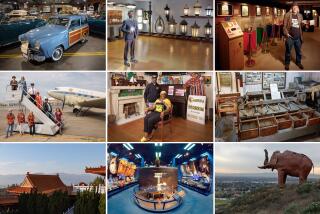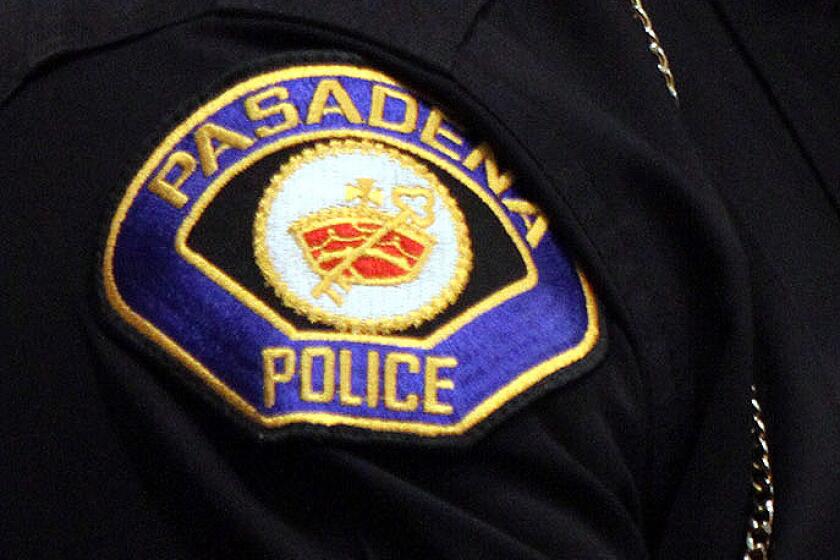Bernard Lewin, 96; Art Dealer, Donor
- Share via
Bernard Lewin, a leading collector and dealer of Latin American art, died Jan. 30 at his home in Rancho Mirage. He was 96 and had suffered from heart problems for several months.
Together with his late wife, Edith, he amassed a trove of close to 2,000 works, many of them by the best-known names in Mexican Modernist painting. In 1997, the couple donated their holdings to the Los Angeles County Museum of Art, a gift that made LACMA’s Latin American collection among the top in the country.
For the record:
12:00 a.m. Feb. 6, 2003 For The Record
Los Angeles Times Thursday February 06, 2003 Home Edition Main News Part A Page 2 National Desk 9 inches; 336 words Type of Material: Correction
Lewin obituary -- The obituary of Bernard Lewin in Wednesday’s California section misspelled Wiesbaden, Germany, as Weisbaden.
The Lewins retained possession of two works they said they could not bear to part with -- a portrait of Frida Kahlo by her husband, Diego Rivera, and a work by Kahlo titled “Weeping Coconuts.” Those two paintings now revert to the museum.
“Bernard Lewin fell in love with an aesthetic,” Andrea Rich, president of LACMA, told The Times this week. She referred to his gift as “the sort of donation that a publicly funded museum like LACMA hopes for. Great works that stand the test of time are often beyond the financial capabilities of a public museum to acquire. Patrons like the Lewins become extremely important. Donor-collectors have helped build the core collections of great museums.”
Born in Weisbaden, Germany, in 1906, Lewin married in 1933. The couple fled the Nazi regime in 1938 and settled in the San Fernando Valley, where Bernard moved furniture for a living. He soon began to buy and sell family estates and occasionally came across works by Latin American artists among the furniture. This was his introduction to the art he soon came to love, Rich said.
Lewin opened his first B. Lewin Furniture store in Van Nuys in 1956 and displayed paintings from his private art collection on the walls. He expanded his business to include stores in Glendale and North Hollywood before he closed the business in 1972. By then he had opened a gallery for Latin American art in Beverly Hills and wanted to devote all of his time to it.
Lewin made his first trip to Mexico City in 1958, curious to meet the artists whose work he had come to admire. Eventually he acquired drawings, watercolors and paintings by the biggest names in the field, including Rivera, Kahlo, Rufino Tamayo, David Siqueiros and Jose Clemente Orozco. When he turned his collection over to LACMA, it included 27 works by Tamayo and 23 by Rivera. The estimated value of the collection was $25 million.
“The Lewins were trend makers,” said Ilona Katzew, LACMA’s curator of Latin American art. “They started collecting at an early point.”
During that first trip to Mexico, Lewin bought three paintings from the estate of Diego Rivera, who had died in 1957. On later visits, he met Tamayo, his favorite artist, and muralist Siqueiros. He formed lasting friendships with both men.
One memorable trip Lewin made to Mexico City in 1964 was to celebrate the official pardon and release from prison of Siqueiros, who had spent four years in jail. An outspoken Communist and political activist, Siqueiros was arrested in 1960 during street demonstrations by striking railway workers and teachers. To celebrate his return to freedom, Lewin bought 10 of Siqueiros’ drawings, which helped the artist finance a mural for Mexico City’s Chapultepec Castle museum.
When the Lewins opened their B. Lewin Galleries in 1968, they introduced their clients to a number of the Latin American artists they had discovered on their own. In 1984, they moved their gallery to Palm Springs and finally closed it in 1997 when they retired. Two years later, Edith Lewin died of cancer. At LACMA, a permanent gallery space was established in the couple’s name three years ago to house the collection. More recently a study center for scholarly research in Latin American art was also opened.
The Lewins also donated a small collection of art to the Palm Springs Desert Museum near their home in Rancho Mirage. It consisted primarily of pre-Columbian works.
Lewin is survived by a son, a sister, two grandchildren and three great-grandchildren.
Memorial donations can be made to the Inge Pauli Institute, P.O. Box 30133, Santa Barbara, CA 93130, or to the American Heart Assn., Western States Affiliates, Gift Processing Center, 1710 Gilbreth Road, Burlingame, CA 94010.
More to Read
Sign up for Essential California
The most important California stories and recommendations in your inbox every morning.
You may occasionally receive promotional content from the Los Angeles Times.













